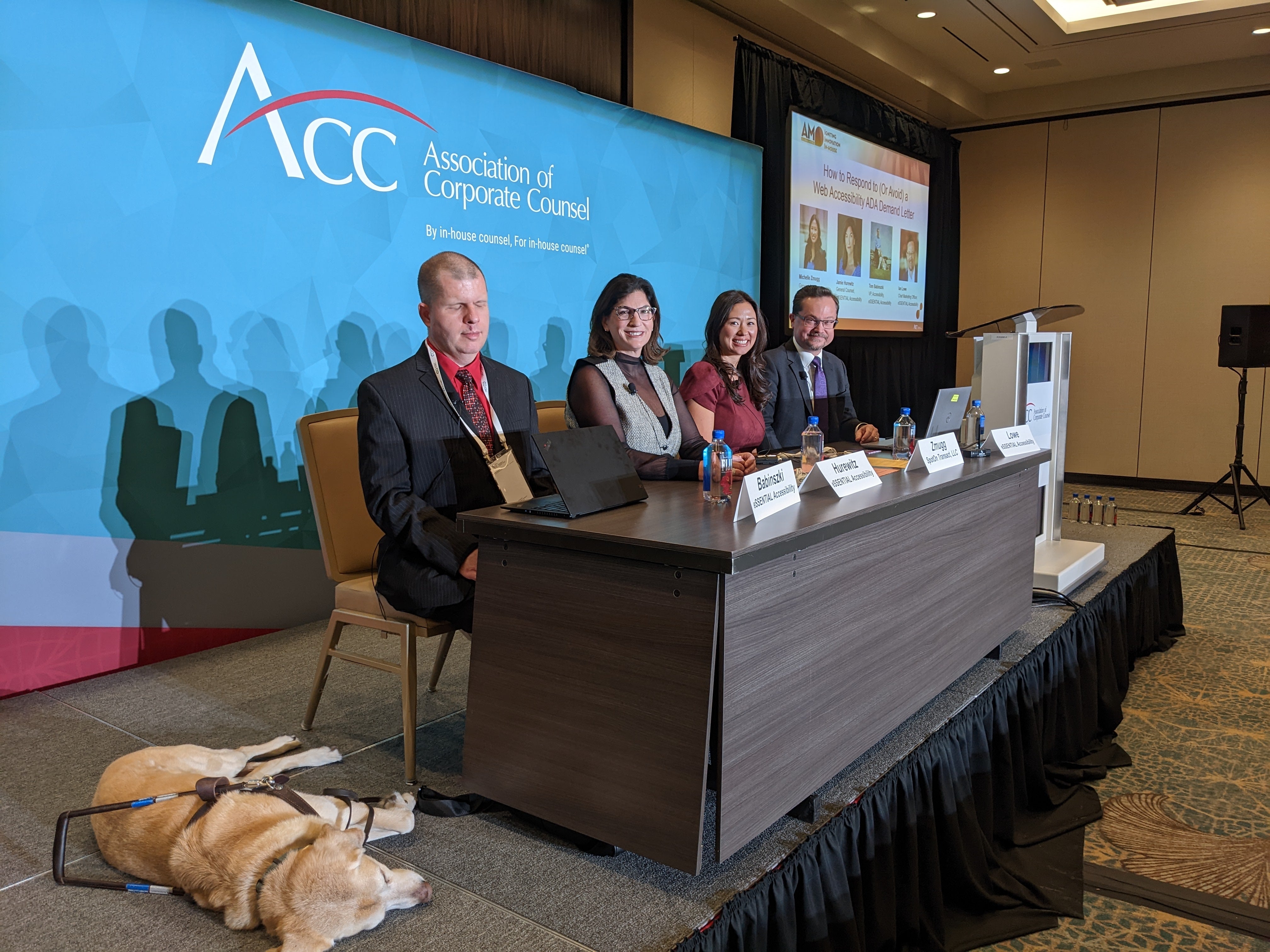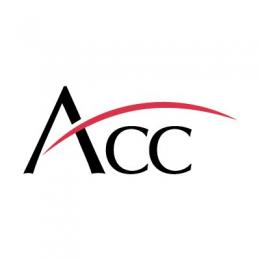Session 410 Panelists
Tom Babinszki, VP Accessibility, eSSENTIAL Accessibility
Jamie Hurewitz, General Counsel, eSSENTIAL Accessibility
Ian Lowe, Chief Marketing Officer, eSSENTIAL Accessibility
Michelle Zmugg, General Counsel, SpotOn Transact, LLC
What was the most valuable thing you learned during this session?
On digital accessibility for disabled persons, “It is a much bigger issue than what is specific to your organization.”
CHRISTOPHER GHAZARIAN, GENERAL COUNSEL OF DREAMHOST

Be proactive and you'll avoid complaints and build loyalty
- Incorporating individuals with disabilities in your diversity, equity, and inclusion (DEI) discussions will help you build your sites and protect yourself against complaints.
- Web accessibility is a challenge and an opportunity – you are gaining access to an estimated 165 million people just in the United States.
"Making your site digitally accessible for people with disabilities makes it better, more usable for everyone."
Ian Lowe, Chief Marketing Officer, eSSENTIAL Accessibility
- Follow the US Department of Justice’s guidance, which states that the Americans with Disabilities Act applies to digital experiences.
- If you receive a demand letter about accessibility issues, assess if it is legitimate, i.e. a reasonable claim (which typically aims at improving accessibility of your web assets), or if it comes from a litigation troll seeking a quick settlement.
- Partner with the technical team to evaluate whether the site has accessibility issues.
"If you test for accessibility after you make your site live, you’ve already lost half the battle."
IAN LOWE, CHIEF MARKETING OFFICER, ESSENTIAL ACCESSIBILITY
- Decide how to address the demand by either fixing the issue or preparing for litigation.
- Review all digital assets, not just the one that was targeted in the demand letter.
- Communicate your commitment to the public.
“We need to ensure that all products, services, and information are available for people with disabilities.”
Tom Babinszki, VP Accessibility, eSSENTIAL Accessibility
Presented in cooperation with eSSENTIAL Accessibility
Disclaimer: The information in any resource in this website should not be construed as legal advice or as a legal opinion on specific facts, and should not be considered representing the views of its authors, its sponsors, and/or ACC. These resources are not intended as a definitive statement on the subject addressed. Rather, they are intended to serve as a tool providing practical guidance and references for the busy in-house practitioner and other readers.




